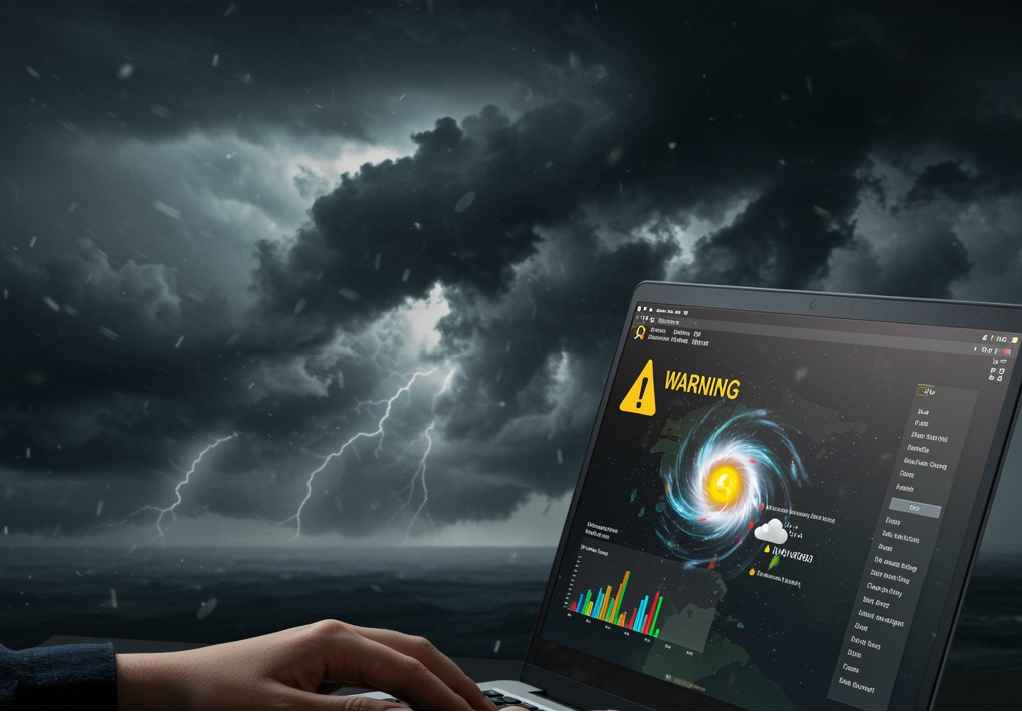
(Shutterstock AI-Generated Image)
As climate change fuels stronger and more unpredictable tropical cyclones, the need for faster, more accurate forecasting is becoming critical. We previously explored how artificial intelligence is reshaping weather prediction, with models like GraphCast, StormCast, and IBM’s Prithvi showing early success in tracking storm behavior.
Building on that momentum, Google DeepMind and Google Research are launching Weather Lab – a new AI-driven platform designed specifically to improve forecasts for tropical cyclone formation, intensity, and trajectory. The goal is to provide earlier warnings, enhance preparedness efforts, and minimize the loss of life and economic disruption caused by severe weather events.
Weather Lab is accessible through a dedicated website, making its advanced forecasting tools available to researchers, agencies, and communities worldwide.
Google hopes to play a meaningful role in mitigating the dangers of tropical cyclones, which have endangered lives and devastated communities in their wake. And in the past 50 years, they’ve caused $1.4 trillion in economic losses.
What makes rotating storms, such as hurricanes and typhoons, so difficult to forecast is that they are extremely sensitive to even small variations in atmospheric pressure. Despite decades of progress in numerical weather prediction, accurately anticipating their development and behavior remains a major challenge.
Traditional physics-based models often make trade-offs to meet operational constraints, sacrificing resolution or complexity to deliver results fast enough for real-time decision-making.
 To overcome some of these challenges, Weather Lab uses Google’s latest experimental AI-based tropical cyclone model based on stochastic neural networks. The tech giant claims that the new model can generate 50 possible scenarios up to 15 days ahead, predicting the storm’s formation, track, intensity, size, and shape.
To overcome some of these challenges, Weather Lab uses Google’s latest experimental AI-based tropical cyclone model based on stochastic neural networks. The tech giant claims that the new model can generate 50 possible scenarios up to 15 days ahead, predicting the storm’s formation, track, intensity, size, and shape.
Google shared that it successfully tested Weather Lab for future paths of Cyclones Honde and Garance south of Madagascar, as well as Cyclones Jude and Ivone in the Indian Ocean. For further validation of the model, Google is partnering with the U.S. National Hurricane Center (NHC), which assesses cyclone risks in the Atlantic and East Pacific basins.
Weather Lab not only offers live model outputs but also provides a rich archive of over two years of historical forecasts across all major ocean basins. Users can explore predictions from both AI and physics-based models, including outputs from the European Centre for Medium-Range Weather Forecasts (ECMWF), to compare accuracy and performance over time.
Based on internal testing results, Google’s AI model rivaled or even surpassed traditional forecasting tools that have taken decades to develop. Weather Lab’s five-day forecast in the North Atlantic and East Pacific was, on average, 140 kilometers closer (more accurate) to the actual storm location than forecasts by ECMWF’s ENS, a leading physics-based ensemble model. According to Google, Weather Lab outperformed the National Oceanic and Atmospheric Administration (NOAA)’s Hurricane Analysis and Forecast System (HAFS), a leading regional, high-resolution physics-based model.
A key factor behind the model’s performance is its training on two complementary datasets: a global reanalysis of historical weather patterns and a specialized archive of nearly 5,000 tropical cyclones recorded over the past 45 years. This combination enables the AI to learn both large-scale atmospheric dynamics and the fine-grained behaviors specific to individual storms. This dual learning foundation is critical to the model’s ability to generate accurate and reliable forecasts.
Google has also published a detailed research paper on arXiv describing the Forecast Generative Network (FGN), the AI model underpinning Weather Lab’s predictions, along with an open archive of historical cyclone data for validation and backtesting. “FGN offers substantial improvements over previous ML-based probabilistic weather models and sets a new state-of-the-art in ensemble forecasting,” wrote the authors of the paper.
To support broader evaluation, Google has made an open archive of historical cyclone data available through Weather Lab, enabling researchers and agencies to assess the model’s accuracy and backtest its performance across past storm seasons.

(BEST-BACKGROUNDS/Shutterstock)
Amid rollbacks in federal support for climate science, including cuts to the National Weather Service’s workforce, Google’s effort reflects a broader shift toward private-sector innovation in forecasting
While Google is confident in Weather Lab’s ability to predict cyclones, it presents the system as a research tool, best used alongside, not instead of, traditional modeling techniques that remain foundational to weather prediction.
AI-powered tools like Weather Lab are undoubtedly promising, but they are still in the experimental stage. Official forecasts and emergency alerts should continue to come from national meteorological agencies.
Still, Weather Lab marks a meaningful shift in how advanced technologies can enhance forecasting science. Beyond supporting meteorologists and disaster response teams, its insights could also inform urban planning and policy development in regions vulnerable to extreme weather.
By making its AI models and historical data publicly accessible, Google is encouraging collaboration, scrutiny, and real-world testing that could move AI-powered forecasting closer to operational readiness. Google says it’s teaming up with researchers at Colorado State University’s Cooperative Institute for Research in the Atmosphere, along with experts in the UK and Japan, to further refine and strengthen its AI weather models.

